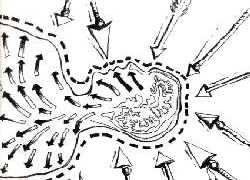Where mind matters
 font class="UCASE"> the relationship between emotions and susceptibility to a disease was establi-shed a long ago. Now a study conducted by Esther H Sternberg of the National Institutes of Health in Bethesda, usa, explains the process of communication between neural and immune systems ( Nature medicine , Vol 3, No 3).
font class="UCASE"> the relationship between emotions and susceptibility to a disease was establi-shed a long ago. Now a study conducted by Esther H Sternberg of the National Institutes of Health in Bethesda, usa, explains the process of communication between neural and immune systems ( Nature medicine , Vol 3, No 3).
Organs of the immune system such as the spleen and thymus are stimulated by sympathetic nerves and the administration of neuropeptides (chemicals used by the nervous system) can stimulate immune response. It shows that peri-pheral inflammatory stimuli can act as hormones and activate the central nervous system. So the effects of in-fectious agents on sleep, metabolism and beha-viour can be correlated with effects of the agents in specific regions of the brain.
A complex stimulus such as a physical or social stress activates a variety of central nervous system pathways at the same time. So it may be rather ambitious to find out the consequences of such activation in terms of a single molecular entity. But there is progress on this front as well. For instance, a strain of mice is resistant to tuberculosis whereas others are susceptible. In the susceptible strains, corticosteroids - hormones secreted by the adrenal gland - and similar synthetically made chemicals, released as a result of stress can degrade a specific Ribonucleic Acid ( rna) that is involved in the immune response of the animal.
The implication is that the resistant strain is resistant, at least in part, because it does not get easily stressed. The findings show the link between emotions and disease in terms of a balance bet-ween nervous stimuli and molecules.
Related Content
- Order of the National Green Tribunal regarding reconstitution of the Committee constituted by MoEF&CC for SLHEP, 31/07/2019
- On World Environment Day, CSE warns no one is safe from deadly ozone pollution-- including chief minister Arvind Kejriwal
- India’s first-ever environmental rating of coal-based power plants finds the sector’s performance to be way below global benchmarks
- Indizel, the bio-fuel brand by My Eco Energy set to lead India towards energy Independence
- Delhi tops the country in fatal road accidents and in number of pedestrians and cyclists falling victim, says new CSE assessment
- Budget 2013-2014: speech of P. Chidambaram, Minister of Finance
